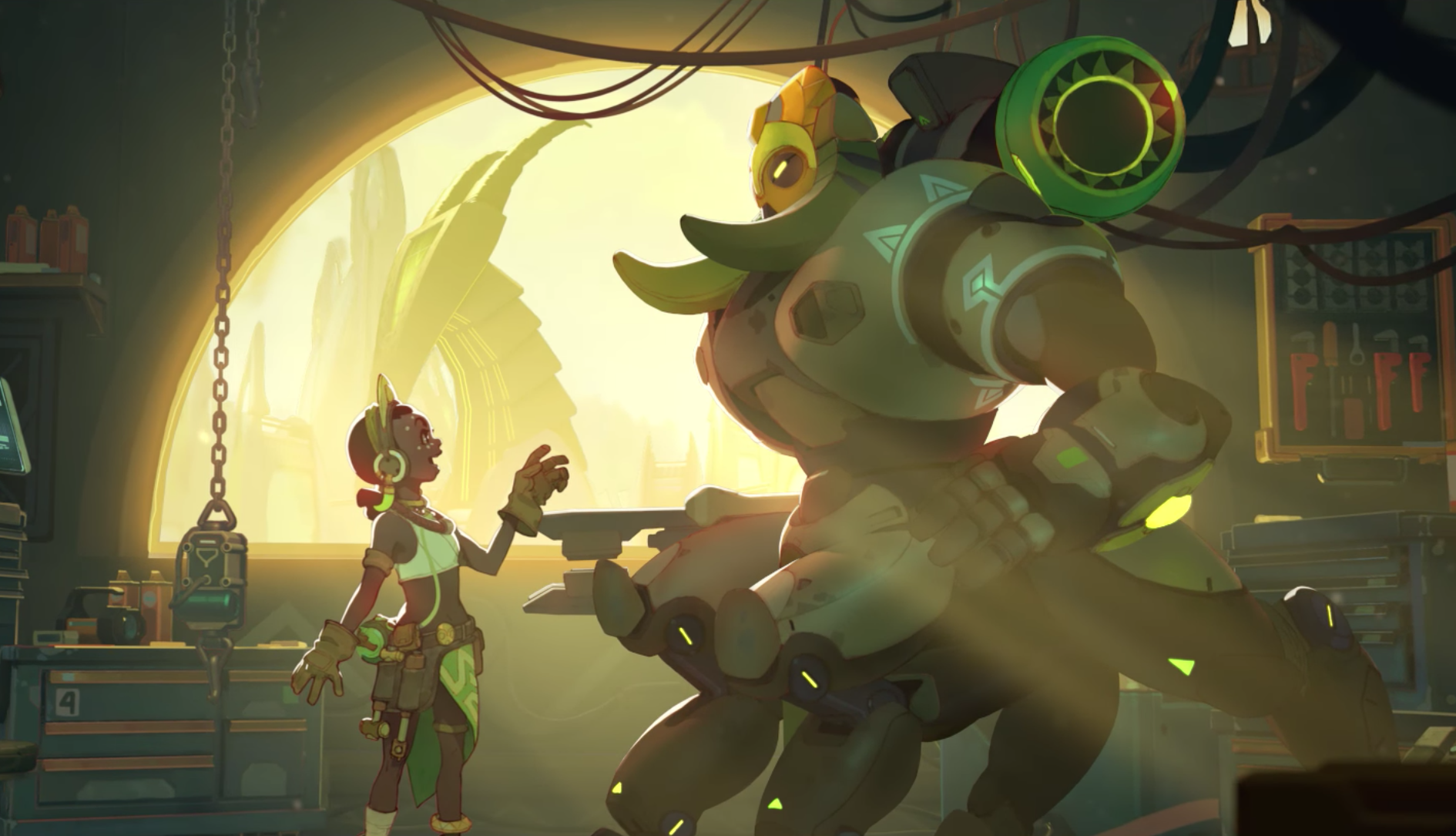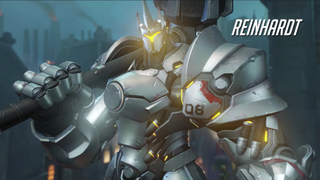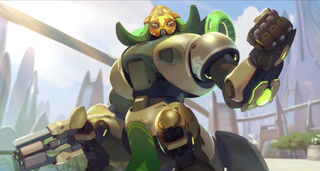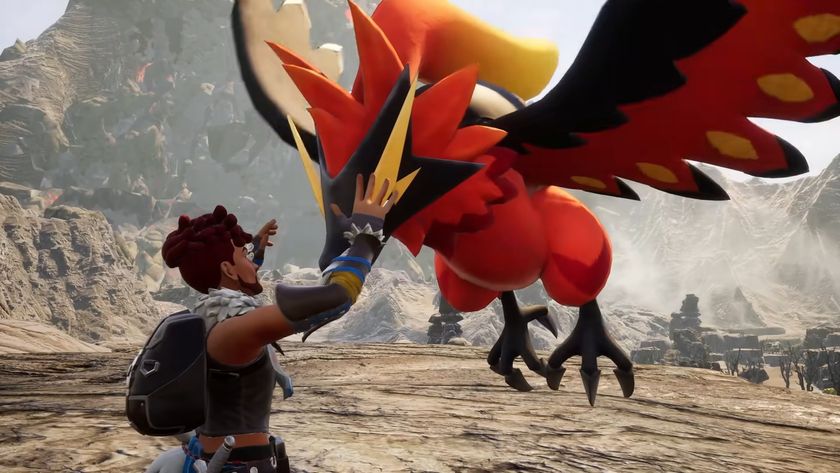Overwatch, Orisa, and the challenge of making tanks cool

Character fantasy has always been one of Blizzard’s best design strengths. Across all of its titles, from the nimble demon hunters of Diablo to the element-wielding shamans in World of Warcraft, the Blizzard teams have an uncanny ability to put you into not just the shoes, but also the body and mind of your chosen character. The world around you falls away and you get lost in the life of some other character.
With tanks, though, that can be a hard sell.
One part of that seems to be wrapped up in the ‘fantasy’ part. When you picture a tank character in your mind’s eye, you probably see someone bulky, heavy, and slow-moving. Tanks are the damage sponges. The brutes. When juxtaposed with the look and play style of many damage dealers – lithe and agile, strong and powerful, or quick and calculating – it’s clear which one social constructs tell us is the more desirable to be.
Even leaving aside how ridiculous those social constructs are, in a purely gameplay sense, tanks are a high-pressure and high-challenge class. WoW players know this well: how often has your raid or dungeon group wiped because the tank made an error? The healers are important, sure, but the ultimate success or failure of a multiplayer game usually sits squarely on the tank’s broad shoulders. If you want to play a game in order to relax, who would seek out that kind of pressure?
That brings us to Overwatch.

Take a look at the tank heroes and they fit the usual bill on appearance. Yet Overwatch doesn’t seem to struggle with the same amount of player uptake on that class. Sure, on some rounds of Escort you’ll be rolling your eyes when nobody else picks a tank on the attack side. But there’s nothing on the scale of an hour-long wait for a WoW raid as all the damage dealers wait for enough tanks to queue. In general, Overwatch has succeeded in making tanks cool.
A big reason for that is that there’s less pressure in Overwatch to have a strict role balance like you’d find in WoW. Some blends of heroes and abilities are stronger than others, but you can still get a win with just about any composition if your individual players are good enough. And Overwatch tanks don’t have the same make-or-break level of importance. You could have the worst Winston player and still do just fine if everyone else plays well.
Sign up to the 12DOVE Newsletter
Weekly digests, tales from the communities you love, and more
But there’s also a more subtle and more clever idea at work that makes Overwatch tanks more appealing. The game encourages its players to branch out because it has so many hybrid characters.
Take Orisa, the newest hero. She’s classified as a tank. Yet in skimming her abilities, Orisa actually seems like she could be equally at home among support or defense players. Fortify, a damage reduction buff, and the Protective Barrier are pretty standard tank fare. But instead of the usual tank style of standing on the front lines and swinging a melee weapon, Orisa’s Fusion Drive works as a ranged weapon. She’s also got some cool tech that slows enemies, while her Supercharger ultimate ability is a device that boosts teammate damage. Orisa winds up sounding like you tossed skills from Reinhardt, Zarya, Bastion, and Symmetra into a blender and poured them into a robot chassis. In other words, she’s a tank that would be fun for a player who doesn’t like traditional tank play.

Orisa isn’t an exception. Many Overwatch heroes blur the lines that define what we would consider a specific shooter class. One of the most obvious examples here is Ana, a long-distance healer. The addition of Ana meant a new option that still catered to that character fantasy of hiding in the shadowy corners and picking off enemies, but could also apply that same concept to healing teammates. Given how many Quick Play matches in those early days would have two Hanzos and a Widowmaker in their composition, that addition was huge.
Mei is another example. She’s a defense hero, but most players will tell you that she’s also one of the most obnoxious characters to find yourself fighting against because she can be so disruptive to whatever your team is planning. And since she’s one of the few characters with a self-heal, Mei is actually able to soak up a lot of damage. She may technically be on the defense squad, but given how often she winds up the primary target, she sometimes serves as a tank.
And that is one of the most ingenious ideas at play in Overwatch. Many of its heroes are exposing you to other play styles that you wouldn’t necessarily think to try. The game sneakily encourages you to explore, to be creative. It teaches you skills that transfer across heroes and across classes. Not only is that fun, but it makes you a better player. That’s a truly impressive feat of game design.

Anna is a freelance writer who has written for the likes of GamesRadar, Ars Technica, Blizzard Watch, and Mashable. She's also created games as part of various game jams. Anna likes games about solving puzzles and/or shooting things. She wishes she could trade zingers with GLaDOS and have beers with Garrus Vakarian in real life.











